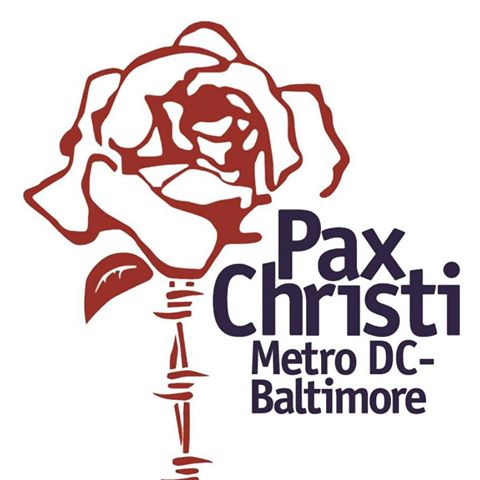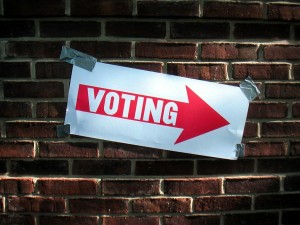
Letter to His Excellency Christophe Pierre, Apostolic Nuncio to the United States
January 31, 2019
Your Excellency,
My purpose in preparing this letter and sending it to you is initially to express my anger and frustration at the continuing and ever-widening revelations of credible evidence of sexual abuse of children and seminarians by clergy in the Catholic Church as well as the failure of the hierarchy to address these deeds in a timely and transparent manner. Equally important is the damage that these revelations are causing to the reputation of the Church and its ability to carry out its sacred role of spreading the word of God, ministering to the needy and providing hope to a world struggling with discontent and pain.
There is a systemic problem of sexual predation in the Church arising from abuse of authority, lack of transparency, and a lack of accountability which are creating the greatest crisis to the institutional Church since the Reformation 500 years ago. Reports of sexual abuse by clergy and the inadequate hierarchical responses of bishops have seriously damaged the credibility of the Church and its moral standing. This letter, therefore, is an attempt to outline the extent of the crisis and to bring to your attention the impact upon the Church of failing to adequately address it.
Traditions of the Church
For more than two thousand years the Church has been the moral authority of Christians and, in varying degrees, a major influence upon the entire world. As the primary transmitter and interpreter of Jesus’ words during His mission on Earth as well as those of the prophets, saints, and inspired writers, the Church has guided its members through periods of dissension, controversy and separation.
- Throughout its history, the Church has provided a moral code and a set of practices that have been sufficiently constant to provide continuity and relative flexibility within an universal Church of diverse cultures.
- For most of its existence, the Church has been strongly allied with the prevailing civil and national authorities, such that it often was able to establish its own judicial courts and legal mechanisms in parallel with secular ones.
- In extreme cases, the Church became the enforcer of religious orthodoxy and the judge, jury and executioner of religious punishments.
- These practices and traditional modes of operation have resulted in a highly centralized institution with authority flowing from the Pope and the Vatican bureaucracy down to national bishops and then to local parishes. This model has been one of the strengths of the Church, especially in times of civic disorder and national disintegration.
- At the same time, this centralized model of Church governance has tended to encourage within the hierarchy a resistance to change and discourage within the laity a willingness to question the hierarchy. The lack of effective checks and balances on the Church hierarchy by the laity and civil authorities has resulted in a clergy more responsive to Church hierarchy and traditions than to the secular laws of countries.
- When conflicts have arisen between Church and State, the Church hierarchy has tended to vigorously defend its actions and traditional prerogatives.
- The rise of democratic governments and institutions over the past 250 years has increasingly challenged the traditional forms of governance within the Church.
- In contrast to earlier ages, modern societies are well-educated, technologically literate, and used to having a voice on major issues. At the same time the Church clings to long-established practices of governance, authority and secrecy.
- If the Church wishes to maintain its role as a moral authority to the world, it must confront the changing world and the needs arising from it.
Recent Revelations of Clergy Sexual Abuse
As noted above, there is a problem of sexual abuse of children and seminarians by clergy in America and several other countries. Domestic reports and court cases from Pennsylvania, Illinois and Minnesota among others, as well as international reports from Australia, Chile and Ireland, show that the problem is not limited to a single country but is worldwide in nature.
- In America, major revelations of clergy abuse in Boston became public in 2002, and despite subsequent Church pledges to carry out procedures to prevent such practices, recent revelations of continuing sexual abuses by clergy have again put the Church in the public spotlight. For example, the 2018 Pennsylvania grand jury report showed that over 300 priests abused more than 1,000 children, young men and women over the past 40 years.
- New revelations by press reports, public investigations and media commentary have raised a cascade of concerns about the role of the Church in modern society. Some of the most prominent concerns include the following:
- Growing reports of individuals directly affected by clergy sexual abuse involving immediate victims (young children, altar boys/girls, students, seminarians) and indirect victims (families of the abused and the abusers, parishioners, Church hierarchy, donors, local officials).
- The removal from ministry of several bishops, most notably Cardinal Theodore McCarrick, former archbishop of Washington, DC. In addition, the sexual abuse scandal has resulted in the resignation of Cardinal Donald Wuerl, the current archbishop of Washington, DC.
- The authority of the Church has been used to cover up reports of sexual abuse.
Impact on the Universal Church
The impact of the sexual abuse crisis in the Church has wide-ranging consequences.
- Direct victims of abuse often are traumatized by the authority figures they trusted. Some carry the psychological scars of helplessness, shame and painful memories for years with distorting effects upon careers, marriages and relationships with the Church.
- Those impacted indirectly by the abuse (families, parishioners, Church officials) may find their faith tested by a Church hierarchy more concerned with avoiding public scandal than protecting the victims of clergy abuse.
- The reputation of the Church suffers both internally within the entire institution and externally among the general public, government officials, and potential future converts because of
- Instances of the Church covering up sexual abuse by internally admonishing guilty clergy and/or transferring them to other parishes.
- Failure of the Church to follow through on its statements that sexual abuse by the clergy is given zero tolerance and all reports of such behaviors are immediately referred to the police.
- Public revelations of criminal and civil legal actions taken against the Church.
- Violation of the trust in the Church held by the laity and general public.
- The impact of these failings further diminishes the reputation of the Church as the institution on Earth set up by Christ in the following ways:
- The credibility of the Church to speak as the agent of God is damaged.
- Respect for the Church and its clergy to be models of Christ-like behavior is weakened.
- The authority of the Church to interpret Christ’s teachings is questioned.
- As long as the sexual abuse crisis remains unresolved, the Church will continue to experience a decline in trust and respect for the institution and for the clergy as guideposts of the faith. The decline in trust and respect will be reflected in falling Church membership, reduced participation in liturgies and Church-related activities, and reduced financial support.
- For various reasons, these effects can already be seen throughout the United States. The clergy sexual abuse crisis can only serve to accelerate the negative trends in Church membership that have been occurring for several decades.
Causes of the Crisis in the Church
The root causes of the current sex abuse crisis in the Church are not isolated errors of judgement or even the faults of a few specific clergy; they are the result of systemic weaknesses in the historic governance of the Church. The initial structure and practices evolved to meet the challenges of the years following the decline and disintegration of the Roman Empire and then the slow development of national states in Medieval Europe. The Protestant Reformation in the 16th century took Christian Europe by surprise and largely forced the Church into a defensive posture: insisting on traditional Catholic practices to clearly define the essential differences with the emerging Protestant interpretations of the Bible and revising Church outreach to both Christian and non-Christian lands. Over time, emphasis upon traditional practices reinforced a rigid governance structure of the Church and lay the grounds for the current clergy sexual crisis.
It should be noted that the current crisis is not ecclesiological in nature. The basic canons and doctrines of the faith founded by Christ are not at issue; the crisis is political in nature. The Church is an institution organized and governed by humans. And despite the role of the Holy Spirit in guiding the Church, its hierarchy and its laity are subject to the same weaknesses of body and soul that are common to all humanity. Among the weaknesses in the current governance of the Church, the following are relevant:
- Clericalism: The desire to advance in the Church hierarchy and public esteem to positions of greater authority and prestige.
- Sexism: The limitation and marginalization of women within the governance structure of the Church, especially their restriction from the priesthood.
- Celibacy: The requirement to remain celibate on the part of nearly all Church ministers, thereby denying one of the main biological needs of humans.
- Lack of transparency: The restriction on public scrutiny of the decision-making processes and major decisions of the Church. Major Church decisions are often made behind closed doors with little or no input from the laity.
- Affluence: The opulent lifestyles, far above the laity, of many bishops and cardinals. Some Church hierarchy live as princes.
- Authoritarianism: The misuse of power over subordinates, especially clergy who have taken vows of obedience and the laity who are taught not to question the commands of the Church.
- Lack of input from the faithful: The absence of democratic mechanisms to allow the laity to influence Church decisions.
- Isolationism: The inaccessibility of some bishops and their limited contact with the laity. Since bishops are not democratically elected, they do not need to respond to the concerns of the laity.
Needs of the Church
- In the current crisis the needs of the Church are many. These needs, however, could be equally stated as those of the laity, since one of the main purposes of the clergy is to minister to the laity. Thus, the Church needs to change some of its rules and practices precisely because of the adverse impact they have on the responsiveness of the laity to Church teachings. This dual set of needs - the practices of the Church and the responsiveness of the laity - include the following:
- The realization that the sexual abuse crisis is mainly political in nature and not a spiritual challenge. Reform in the Church is needed in the institution, not the faith.
- The Church needs to be more understanding and open to the political and social changes of the contemporary world.
- The credibility and moral authority of the Church has been damaged and needs reaffirming.
- Humility of the clergy needs to be emphasized and extravagant lifestyles discouraged.
- Favoritism to wealthy donors should be discouraged.
- The role of women in the Church needs to be equal to men, including the various roles of the clergy. The cultural status of women in biblical times was not ordained by Christ to be immutable.
- The role of the laity needs to be more influential in decision-making within the Church. An educated laity expects to participate in the democratization of major institutions, including the Church.
- The Church needs to allow honest discussion of all issues, even those that challenge doctrinal matters.
- The Church also must realize that it cannot impose its beliefs upon a modern, diverse society that is based on democratic compromise and consensus.
Recommendations (The Way Forward)
It is hardly worth mentioning that an institution that has been functioning for over two millennia is not likely to be influenced by the pleas of one or even several members of the laity. My motivation in preparing this letter is to join the growing cry of the laity in the United States and around the world for our Church to realize the damaging impacts of clergy sexual abuse and take the fundamental reforms needed to prevent future crimes.
These final comments, therefore, are not recommendations for specific actions by the Church, but rather general suggestions for discernment and change within the Church. To the extent they are adopted by the institutional Church, I believe that the clergy sexual abuse crisis will be overcome and both the Church and the laity will emerge stronger and better adapted to the many challenges of the current times. My comments are grouped into three areas: transparency, governance, and formation of the clergy and the laity.
Transparency
- An open Church welcoming greater dialogue between all ranks of clergy and the laity, and even with the general secular public, could increase interest and participation in the critical issues of faith, morals and public policies.
- Inclusiveness in the Church means more than accepting the diversity of Catholic believers but also actively demonstrating its love and respect for others holding different spiritual, religious, social and sexual views.
- Many traditional practices of the Church often were responses to specific problems of their times. It may be worthwhile to examine the relevance of these traditions to present-day and future times. Those found to be inappropriate for today should be eliminated or at least modified.
Governance
- The democratization of most major institutions and the expectations of the public to participate in this process is a reality of our times. The Church could realize greater interest and involvement of the laity by opening up its rules and practices to dialogue with the laity.
- Similarly, the active involvement of women in Church governance, specifically as deacons, priests and bishops, would emphasize the equality of women to fully participate in decisions affecting its members. In addition, their feminine perspective could expand the understanding and response of the Church to the clergy sexual abuse crisis.
- Chastity appears to be one of the most difficult crosses for the clergy to bear. A married priesthood might address some of the problems of the clergy sexual abuse crisis, encourage vocations of men and women, and expand the ranks of the clergy.
- Clericalism has been a long-standing issue in the Church. With greater transparency, ordination of women, a married priesthood and increased participation of the laity, the potential for clericalism may be effectively diminished.
- Increasing the role of the laity in Church decision-making, such as stronger parish councils, diocesan review boards and selection panels for clergy appointments, might help overall governance of the Church at all levels.
Formation of Clergy and Laity
- A greater emphasis on Catholic Social Teaching would help to sensitize both clergy and laity to the needs of the public at large. This could lead to greater participation in Church-sponsored outreach activities and provide useful training for better leaders within the laity.
- Seminaries could stress greater service to the poor and vulnerable rather than the attractions of hierarchical advancement. This would put into practice the principles of the faith and reinforce the credibility of the Church.
- The formation of women clergy, if put on an equal basis with male seminaries, could help to reduce the shortage of priests and other ordained clergy.
- Overall, the Church could benefit from seminary training that stressed adaptation to the unpredictable world which new clergy may face rather than expected, but out-of-date, roles from the past.
Final Comment
To bring about many of the above changes in the Church, massive world-wide efforts would be necessary. This would require the involvement and approval of key clergy at all levels, starting with parishes, dioceses, archdioceses, national episcopal conferences and finally the Vatican. In effect, a global movement is needed. A recent suggestion that touches on this concept proposes the convening of an ecumenical council much like Vatican II, but with the laity taking the lead in organizing and conducting the event. Lay groups and parishes already dealing with the clergy sexual abuse crisis could be the core of the council with representatives of the clergy participating and contributing to the event and its outcome. At this council all aspects of the crisis and the systemic causes in the Church that led to it would be discussed, conclusions reached and appropriate recommendations made. The proposal is intriguing; unfortunately the likelihood of such a gathering is remote.
Dennis Warner
Gaithersburg, Maryland




